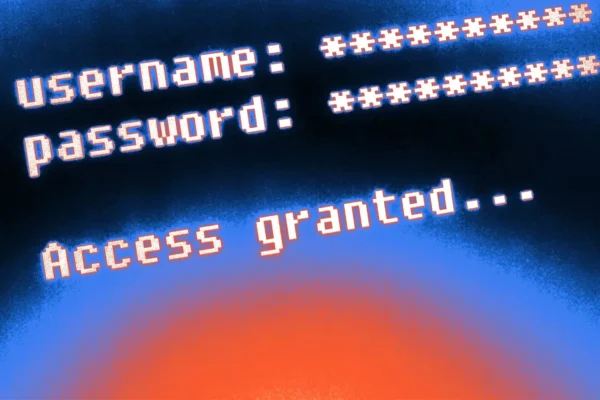
11 Ways Your Identity Can Be Stolen: and How to Be Your Own Hero

No one wants to fall victim to identity theft, but this type of crime is, unfortunately, becoming more and more common. Fraudsters are always coming up with new ways to defraud people, and scams are becoming more intricate and convincing.
Understanding how to protect your identity from thieves has never been more important. In this article, we’ll break down the various methods hackers may use to get access to your most valuable information.
High-Tech Ways Your Identity Can Be Stolen
In today’s high-tech world, scams involving technology and the internet are more common than ever.
1. Email Phishing
Today, one of the most common ways that people have their identities stolen is through email phishing. Phishing is when someone sends an email that looks like it’s from a legitimate company or organization, but is actually from a fraudster. The email will usually contain a link that takes you to a fake website where you’re asked to enter personal information, such as your Social Security number, credit card number, or bank account information.
How to avoid email phishing:
- Always verify where an email came from— even if it looks to be legitimate or from someone you know.
- Never click on links within an email; navigate to the website directly.
- Never submit personal details from unsolicited emails.
2. Malware
Another way that your identity can be stolen is through malware. Malware is software that is designed to damage or disable computers. Once installed on your computer, malware can allow fraudsters to access your personal information, such as your Social Security number, credit card number, or bank account information.
How to avoid malware attacks: There are numerous ways to avoid malware attacks, including:
- Using antivirus software
- Using strong passwords and two-factor authentication on your accounts
- Avoiding opening suspicious emails or links
When browsing the internet, always be aware of what you are downloading and the reputation of the sites you visit.
3. Data Breaches
Data breaches are another common way that people have their identities stolen. A data breach occurs when a company or organization’s computer systems are hacked and personal information is accessed without authorization. Once hackers have your personal information, they can use it to commit fraud, such as opening new credit cards in your name or taking out loans in your name.
How to avoid data breaches: Data breaches are largely out of our control. However, you can minimize their damage by keeping tabs on your credit report and having alerts enabled for your financial accounts.
4. Skimming
Skimming is another common way that people have their identities stolen. Card skimming occurs when someone uses a device to illegally copy the information from the magnetic stripe on your credit card or debit card without your knowledge or consent. Once the fraudster has your credit card or debit card information, they can use it to make unauthorized purchases or withdrawals from your account.
How to avoid skimming:
- Never use an ATM or debit card terminal that looks like it has been tampered with
- Stick to using bank ATMs that are in visible, well-lit areas
- Always cover the keypad when entering your PIN number
5. Pretexting
Pretexting is a type of identity theft called “phishing”. Pretexting involves someone using false pretenses, or pretext, to obtain someone’s personal information.
For example, someone may call you and claim to be from your bank. They say that your account has been locked due to suspicious activity and that in order to unlock it, you need to verify your info and account number.
How to avoid pretexting scams:
- Know that financial institutions and reputable companies will never contact you via text message, phone call, or email and ask for personal information
- Disregard suspicious messages and do not respond
- If you ever have questions about the legitimacy of a message, contact the bank or company directly using the phone number on their official website
6. Social Media Scams
Social media is a relatively new arena for scam activity–but a lot of damage has been done in the last 20 or so years through various deceptive tactics. Here are just some of the ways social media can be a vehicle for fraud:
- Fake profiles linking to malicious websites. These links can come through posts, forwarded messages, and direct messages. When the link is clicked, malware is downloaded automatically–and your computer can be compromised instantly.
- Relationship-building that tricks people into giving away money. This can look like making a new friend on the internet or meeting someone romantically. The scammer develops a relationship over time, asking for small favors at first and then snowballing the requests into thousands of dollars, plane tickets, gift cards, and more.
- Imitation ads and accounts that harvest personal data or money. This kind of scam can involve nearly any industry or account–from people you already know to famous brands. It’s important to verify the account’s identity in as many ways that you can–through Google searches and general social media searches.
- Quizzes and “challenges” that convince people to give up personal information. If you’re completing a quiz online, ask yourself this: who is collecting this information? Can it be used to answer security questions to gain access to your financial accounts? Common phishing questions that can be leveraged against you include: your mother’s maiden name, the street you grew up on, your first car make and model, and your favorite pet’s name.
With social media scams, it’s not enough to trust your gut–it’s important to verify identities and accounts before sending any personal information.
Low-Tech Ways Your Identity Can Be Stolen
Just because we live in a high-tech world doesn’t mean our identities can’t be stolen by low-tech evil-doers. While we live in constant fear of getting ripped off by super hackers, street-level criminals are still a real concern.
Here are some low-tech, old-fashioned techniques to be aware of.
1. Mailbox Theft
Basically, they just walk up to your mailbox and grab what’s inside. If it’s outgoing, they can make use of the checks you’re sending out in order to pay bills. Although check usage continues to go down every year, check fraud is still a major concern. If they grab your incoming mail before you get it, they can have a field day with checks, credit card offers, or personal mail.
How to avoid mailbox theft:
- Always send outgoing mail, especially letters with checks or identifying information, from inside the post office.
- Check your mail at home often, and, if possible, invest in a lockable mailbox that has been approved by the Postmaster General.
2. Vehicle Break-in
Your car or truck is vulnerable to break-ins, especially if you have the habit of leaving it unlocked. And even if you do, a broken window gives them full access to whatever is inside.
How to avoid vehicle break-ins:
- Lock your vehicle doors and set alarm systems when you leave the vehicle.
- Never leave your wallet, purse, checkbook, or sensitive documents unattended.
3. Dumpster Diving
The trash can may be the last place you suspect fraud to occur, but it does. Always be careful of what you put in the trash, as dumpster divers resort to garbage to gather bits and pieces of people’s identities to commit fraud.
How to avoid dumpster diver fraud: Bills, bank statements, official documents, or anything listing your social security number should be shredded before being placed in the trash.
4. Job Scams
In this grift, the scammer places a help-wanted ad and sets up interviews with potential candidates, perhaps in a rented office space. In the course of the application process, they ask for the applicants’ particulars, including their Social Security number. Then, they have that information, plus anything they can glean from the resume the applicant has provided.
Some scammers, like phony temp agencies, may request money in exchange for job placement. Other frauds may also send you a check for supplies, inventory, or equipment and request that you send your unused funds back. The check they sent will eventually bounce, leaving you on the hook for the money you spent.
How to avoid job scams: Always vet employers. Do a quick online search with the company’s name and keywords like “scam” or “complaints”. Don’t bank on cleared checks, nor pay money in exchange for a job.
5. Shoulder Surfing
Shoulder surfing is a type of identity theft that occurs when someone looks over your shoulder while you are entering your personal information into a computer, phone, or other device. Shoulder surfers can steal your passwords, credit card numbers, or other sensitive information simply by watching you enter it into a device.
How to avoid shoulder surfing: When typing or talking about personal information, always be aware of your surroundings. If someone is nearby, take extra caution and avoid making info visible.
The Bottom Line
You can never be too careful with how you use and share identity information. Anytime you’re asked for personal info, pause and ask yourself if you are 100% sure that the source is legitimate and can be trusted. If something feels suspicious, trust your gut. Learn more about how to protect yourself from identity theft!
Become an Amplify Member
Every Amplify account holder enjoys fee-free banking. That means no overdraft, maintenance, or other banking fees cutting into your pocket.




